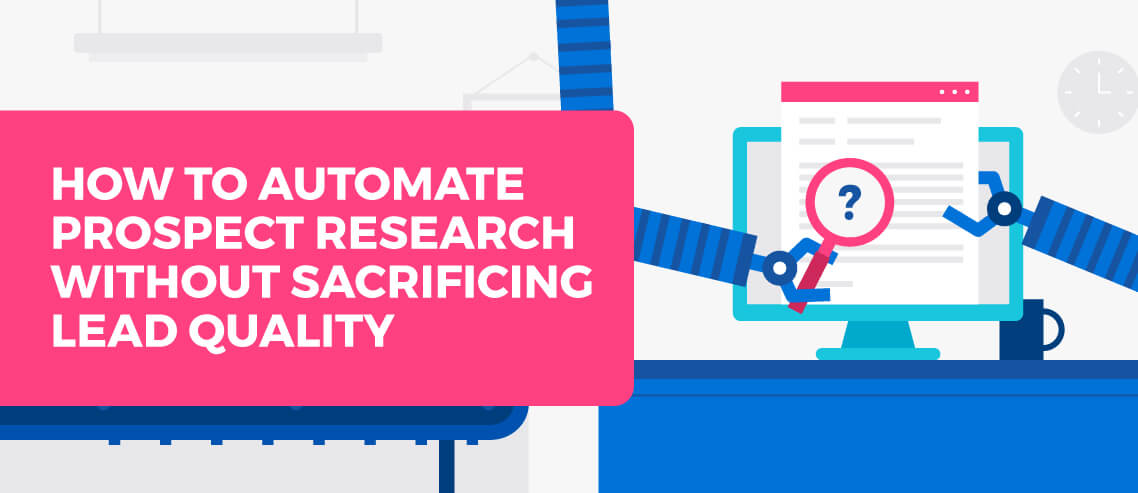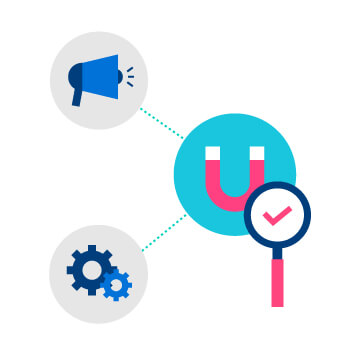How To Automate Prospect Research Without Sacrificing Lead Quality

Automation is something of a bad word when it comes to prospect research. There is a good reason for this: prospect researchers have long feared that automated tools will eventually make them obsolete. As a result, they have long argued that automated tools simply cannot provide the ‘personal touch’ that real-life humans bring to the process.
In reality, these two approaches do not need to be in conflict. Careful deployment of automated tools can ultimately free up time and resources, allowing prospect researchers to use their own expertise more effectively.
Automation: A Bad Approach?
Though prospect researchers are often dismissive of automated tools, the reality is that (good) researchers are already using them. They might not call these processes ‘automation’, but they are.
For example, plenty of researchers have created ultra-efficient sales discovery processes that rely on automated tools. These often include simple techniques – like using Google Sheets to find prospects – that were essentially impossible even ten years ago.
Perhaps, then, we need to change the terms of the discussion. Instead of talking about automated tools as a source of competition for human researchers, we should look at the way that these tools can improve the efficiency of the work of humans.
Synthesis
Automation, whether in prospect research or any other field of marketing, is about taking the leg-work out of laborious tasks. We should recognize that there are some tasks – such as finding the emails of thousands of potential prospects – that are better done by computers.
There are a number of key areas in which automation can greatly help prospect researchers. The first is in the automation of email outreach. Plenty of prospect researchers will tell you that generic emails are ineffective when it comes to nurturing high-value clients, but this is only partially true. Whilst you should make sure that your emails don’t look like a phishing attack, the most advanced automated tools will automatically generate emails that are also highly personalized, and also put in place advanced security practices for email marketing.
Going a step further, automated tools can then be used to generate insights from the data collected as part of outreach campaigns. This is illustrated by, Jen Filla, President of Aspire Research Group, who points out that highly segmented outreach data is the future of prospect marketing:
“What if we could learn to take it a step further and routinely synthesize the information, churning out insights that our development officers can act on?” she says, “It would be another step towards job security, that’s what!”. Using automated tools to provide insights, recommendations for future work, and measures of the success of your current prospect research processes can ultimately make your human prospect researchers more effective.
In terms of practical advice for companies looking to start automating their prospect research tools, you should take a look at any of the high-quality guides that review the capabilities (and cost) of different tools. Which of these you use will depend on the size of your team, and what your priorities are when it comes to improving your prospect research.
A tool like Mailshake, for instance, Is great for quickly improving your lead generation. Using this tool, your team can identify clients who will be the most receptive to follow-up emails and phone calls. At the other end of the market you will find more fully-featured systems like Prospect.io, which will generate huge (but useful) analytical reports on your marketing campaigns.
The best approach, as with any process of automation, is to start small and work from there. Give your prospect researchers a simple tool like Mailshake first, and then listen to their feedback.
Recognize Your Strengths
There are, of course, some things that simply cannot be done by automated tools. Successful prospect research relies on a ‘human touch’. This is particularly true when it comes to following up with prospects who are already interested in your brand.
Consider that insight for a second, and you will see that automated tools are only ever going to be an addition to your existing prospect research processes. If you are a startup, you are likely spending the majority of your resources on attracting new customers: research firm Hosting Canada have pointed out that for most companies, $92 out of every $100 spent in marketing is used to generate traffic, with only one dollar going to converting customers. Further research, highlighted by BlueTree.ai, has shown that startups typically spend 92% percent of their first-year revenue on the acquisition of new customers.
Given this, it makes sense to focus your skilled prospect researchers where their skills can make the most impact: on carefully cultivating the leads generated by automated tools.
If done correctly, this kind of approach need not undermine the personal connection that you need to build with your customers. In fact, processes like this are likely to become the standard in prospect research over the next few years.
Go Forth and Automate
And that, in short, is the key to automating prospect research without compromising on quality. Let the machines do the boring, and free up your prospect researchers to craft stories, and engage directly with the most promising leads.





